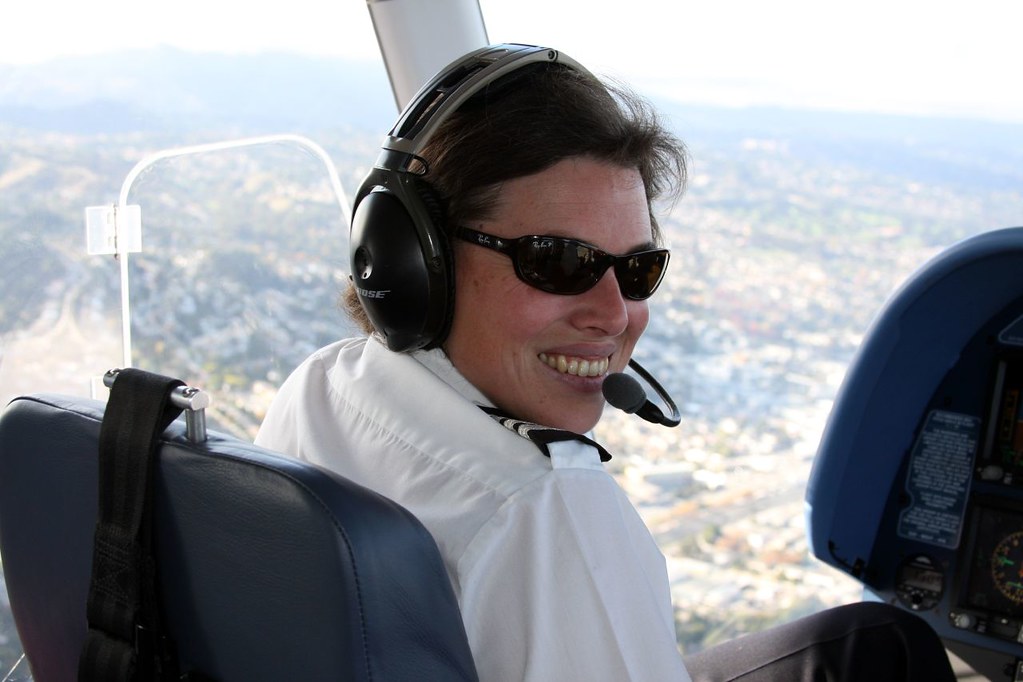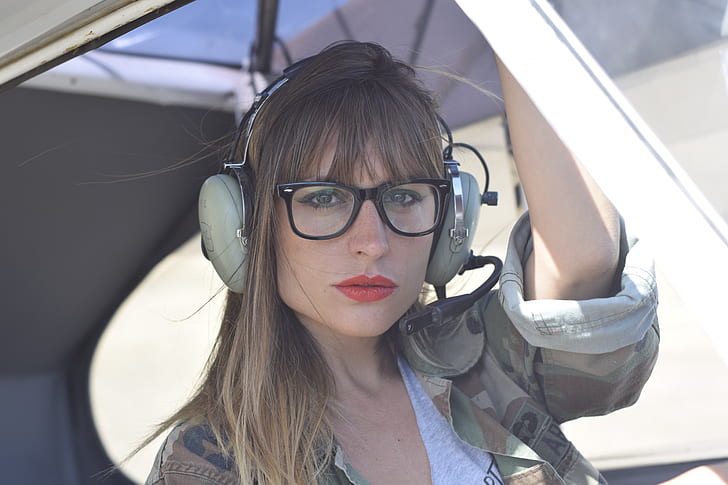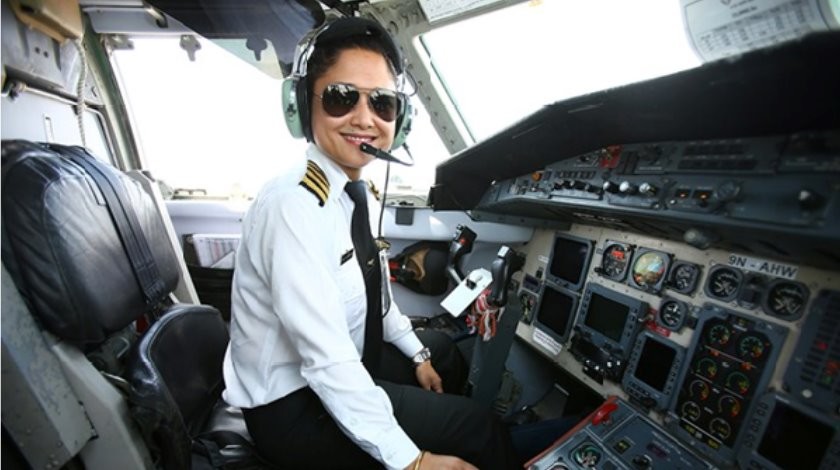In the world of aviation, communication is crucial. Pilots need to maintain clear, uninterrupted contact with air traffic control (ATC), co-pilots, and crew members to ensure safe and efficient flights. A reliable aviation headset is a pilot’s lifeline, delivering clear audio while blocking out the overwhelming noise of the cockpit. Beyond communication, these headsets also play a significant role in reducing fatigue by providing comfort and advanced noise reduction, making them indispensable tools for both professional and recreational pilots.
With the wide array of aviation headsets available on the market, ranging from basic models to high-tech gadgets, choosing the right one can be daunting. Whether you’re a student pilot just starting your journey or a seasoned commercial aviator, understanding the types, features, and brands available will help you make an informed decision. This comprehensive guide explores the various options, key features to consider, and tips for maintaining your headset, ensuring you find the perfect match for your aviation needs.
1. Types of Aviation Headsets
Passive Noise Reduction (PNR) Headsets
Passive Noise Reduction (PNR) headsets are among the most traditional and widely used types of aviation headsets. PNR technology works by using the headset’s physical structure to block out external sounds. The ear cups are typically made of dense materials that create a seal around the ears, reducing the amount of ambient noise that reaches the pilot’s ears. This passive method of noise reduction does not require any power source, making PNR headsets a straightforward and reliable choice.
How PNR Works
PNR headsets rely on their design and materials to provide noise attenuation. The headset’s ear cups are padded with high-density foam or gel, which creates a barrier between the pilot’s ears and the loud environment of the cockpit. While PNR headsets are effective at reducing low to moderate noise levels, they may not be as efficient in extremely noisy environments, such as those found in helicopters or older, noisier aircraft.
Examples of Popular PNR Headsets
- David Clark H10-13.4: Known for its durability and comfort, this model has been a favorite among pilots for decades. It offers reliable noise reduction, a lightweight design, and a reasonable price point, making it a go-to choice for many general aviation pilots.
- Faro G2 PNR: Faro’s G2 model is another popular PNR headset, offering a blend of comfort, noise reduction, and affordability. Its soft, gel ear seals and adjustable headband ensure a snug fit, even during long flights.
Active Noise Reduction (ANR) Headsets
Active Noise Reduction (ANR) headsets represent a significant advancement in aviation headset technology. Unlike PNR headsets, ANR models use electronic circuitry to actively cancel out ambient noise. This technology allows for much greater noise reduction, particularly in the low-frequency range, making them ideal for use in noisy cockpits.

How ANR Technology Works
ANR headsets incorporate tiny microphones inside the ear cups that pick up ambient noise. The headset’s electronic circuitry then generates sound waves that are 180 degrees out of phase with the detected noise. These sound waves effectively cancel out the unwanted noise, providing the pilot with a quieter and more comfortable listening environment. ANR headsets require a power source, usually in the form of batteries or aircraft power, to operate the noise-canceling technology.
Examples of Popular ANR Headsets
- Bose A20: The Bose A20 is often regarded as one of the best ANR headsets on the market. It offers outstanding noise reduction, superior comfort, and a range of advanced features, such as Bluetooth connectivity and customizable audio settings.
- Lightspeed Zulu 3: The Zulu 3 is another top-performing ANR headset, known for its excellent noise cancellation, comfort, and durability. It also features Bluetooth connectivity, making it a versatile choice for both professional and recreational pilots.
2. Top Brands and Models
Bose Aviation Headsets
Bose is a household name in the audio industry, and their aviation headsets are no exception to their reputation for quality and innovation. Bose headsets are known for their superior noise-canceling capabilities, comfort, and advanced features, making them a favorite among professional pilots.
Overview of Bose A20, A30, and ProFlight Series 2
- Bose A20: The A20 is one of the most popular aviation headsets available. It features advanced ANR technology, excellent audio quality, and a lightweight, comfortable design. The A20 also offers Bluetooth connectivity, allowing pilots to connect to mobile devices for phone calls or music. It’s built to be durable, making it suitable for both general aviation and commercial use.
- Bose A30: The Bose A30 builds on the success of the A20, offering even more advanced features and enhanced noise cancellation. The A30 is designed to provide an even quieter experience, with improved audio clarity and comfort. It’s a great choice for pilots who spend long hours in the cockpit.
- ProFlight Series 2: The ProFlight Series 2 is Bose’s offering for pilots of pressurized, quieter aircraft, such as jets. It’s lighter and more compact than the A20 and A30, with a low-profile design that reduces pressure on the pilot’s head during long flights. The ProFlight Series 2 also includes Bluetooth connectivity and customizable audio settings.
Key Features and Benefits
- Superior Noise Cancellation: Bose headsets are renowned for their ability to block out cockpit noise, providing a quieter environment for pilots to communicate and focus.
- Comfort and Fit: With lightweight designs and ergonomic features, Bose headsets are comfortable to wear, even on long flights.
- Advanced Connectivity: Bose models often include Bluetooth connectivity, allowing pilots to connect to multiple devices simultaneously.
David Clark Headsets
David Clark is a well-established brand in the aviation industry, known for producing rugged and reliable headsets. Their products are favored by many pilots for their durability and classic design.
Overview of David Clark H10-13.4 and DC One X
- David Clark H10-13.4: This model is one of the most iconic headsets in aviation. It features a simple, reliable design with PNR technology. The H10-13.4 is known for its durability, comfort, and excellent value, making it a popular choice among general aviation pilots.
- DC One X: The DC One X is David Clark’s answer to the demand for ANR technology. It combines the brand’s signature durability with advanced noise-canceling capabilities. The DC One X is lightweight, comfortable, and offers Bluetooth connectivity, making it a versatile option for a wide range of pilots.
Key Features and Benefits
- Durability: David Clark headsets are built to last, with sturdy construction that can withstand the rigors of daily use.
- Classic Design: The brand’s headsets are known for their timeless, no-nonsense design, which appeals to many pilots.
- Comfort: Both the H10-13.4 and DC One X are designed for comfort, with adjustable headbands and soft ear cushions.
Lightspeed Aviation Headsets
Lightspeed Aviation is a leading manufacturer of premium aviation headsets, known for their innovation, comfort, and superior noise-canceling technology. Their products are popular among both private and professional pilots.
Overview of Lightspeed Zulu 3 and Sierra
- Lightspeed Zulu 3: The Zulu 3 is one of Lightspeed’s flagship models, offering exceptional ANR performance, comfort, and durability. It’s equipped with Bluetooth connectivity, allowing pilots to easily connect to mobile devices. The Zulu 3 is designed for long-term comfort, with plush ear seals and a lightweight construction.
- Lightspeed Sierra: The Sierra is a more affordable option in Lightspeed’s lineup, offering great value without compromising on quality. It features ANR technology, Bluetooth connectivity, and a comfortable design, making it a popular choice for student pilots and general aviation enthusiasts.
Key Features and Benefits
- Advanced Noise Cancellation: Lightspeed headsets provide excellent ANR performance, reducing cockpit noise to ensure clear communication.
- Comfortable Fit: Both the Zulu 3 and Sierra are designed with comfort in mind, featuring lightweight materials and cushioned ear cups.
- Connectivity: Bluetooth connectivity is a standard feature in Lightspeed headsets, allowing pilots to stay connected with ease.
3. Key Features to Consider
When selecting an aviation headset, several key features should be considered to ensure it meets your specific needs. These include noise cancellation, comfort, connectivity options, and durability.
Noise Cancellation
Importance of Noise Cancellation in Aviation Headsets
Noise cancellation is one of the most important features in an aviation headset. The cockpit can be an incredibly noisy environment, especially in older aircraft or during certain phases of flight, such as takeoff and landing. Effective noise cancellation reduces the amount of external noise that reaches the pilot’s ears, allowing for clearer communication with ATC and other crew members. It also helps reduce fatigue during long flights, as pilots don’t have to strain to hear important instructions or conversations.
Comparison Between PNR and ANR
- PNR: Passive Noise Reduction headsets are effective at blocking out mid to high-frequency noises, such as engine hum. They rely on the headset’s physical structure to create a sound barrier. However, they may not be as effective in very noisy environments, and they can be bulkier and less comfortable for long periods.
- ANR: Active Noise Reduction headsets use electronic circuitry to cancel out lower-frequency noises, such as the drone of aircraft engines. ANR headsets tend to provide a quieter and more comfortable experience, especially in loud cockpits, but they require a power source and are generally more expensive than PNR headsets.
Comfort and Fit
Importance of Comfort for Long Flights
Comfort is a critical factor when choosing an aviation headset, especially for pilots who spend long hours in the cockpit. An uncomfortable headset can cause headaches, ear pain, and general discomfort, which can distract a pilot from the task at hand. Features such as adjustable headbands, soft ear cushions, and lightweight materials contribute to overall comfort and are essential considerations.
Adjustable Headbands, Ear Cushions, and Weight Considerations
- Adjustable Headbands: A good aviation headset should have an adjustable headband that can be easily tailored to fit the pilot’s head size and shape. This ensures a secure fit without being too tight, which can cause discomfort over time.
- Ear Cushions: The quality of the ear cushions is another important factor. Soft, plush cushions made from materials like memory foam or gel help create a comfortable seal around the ears, improving both comfort and noise reduction.
- Weight: The weight of the headset is crucial, particularly for long flights. Heavier headsets can cause neck strain and fatigue, so it’s important to choose a model that is lightweight yet durable.
Connectivity Options
Bluetooth Connectivity
Bluetooth connectivity is becoming increasingly popular in aviation headsets, offering pilots the convenience of wireless communication with mobile devices. This feature allows pilots to make phone calls, listen to music, or receive audio alerts from apps without needing to connect via a wired connection. It’s especially useful for pilots who need to stay connected to multiple devices simultaneously.
Wired vs. Wireless Options
- Wired: Traditional wired headsets are often more reliable and do not require charging, making them a dependable choice for many pilots. However, they can be less convenient, especially if multiple cables are involved.
- Wireless: Wireless headsets offer more freedom of movement and reduce the clutter of cables in the cockpit. However, they rely on batteries or charging, which can be a drawback if the power runs out during a flight.
Durability and Build Quality
Materials Used in Construction
The durability of an aviation headset is largely determined by the materials used in its construction. High-quality headsets are typically made from durable plastics, metal components, and reinforced wiring, ensuring they can withstand the rigors of daily use in the cockpit. Pilots should look for headsets with robust construction that can handle the wear and tear of frequent use.
Warranty and Customer Support
A good warranty is a sign of a manufacturer’s confidence in their product. Pilots should consider headsets that come with a comprehensive warranty, as this can provide peace of mind and protection against defects or issues that may arise. Additionally, strong customer support from the manufacturer is crucial, as it ensures that any problems or questions can be promptly addressed.
4. Price Range and Budget Considerations
When it comes to purchasing an aviation headset, price is a significant factor. Headsets can range from affordable entry-level models to high-end options with advanced features. It’s important to balance budget considerations with the features that are most important for your needs.
Entry-Level Headsets
Features and Price Range
Entry-level headsets are typically priced between $100 and $300. These headsets often feature PNR technology, basic comfort features, and standard durability. While they may lack some of the advanced features found in higher-end models, they provide a reliable option for student pilots or those on a tight budget.
Suitable Models for Student Pilots
- Faro G2 PNR: Affordable and reliable, the Faro G2 PNR is a great option for student pilots. It offers good noise reduction and comfort at a reasonable price point.
- David Clark H10-13.4: As a classic, durable option, the H10-13.4 is slightly more expensive but offers excellent value for its reliability and comfort, making it a popular choice among beginners.
Mid-Range Headsets
Features and Price Range
Mid-range headsets typically cost between $300 and $700. These models often include ANR technology, enhanced comfort features, and more durable construction. They are suitable for general aviation pilots who want a good balance between price and performance.
Suitable Models for General Aviation Pilots
- Lightspeed Sierra: The Sierra offers ANR technology, Bluetooth connectivity, and comfort at a competitive price, making it a strong contender in the mid-range category.
- Bose A20: While at the higher end of the mid-range price spectrum, the Bose A20 offers premium features and is an excellent investment for serious pilots.
High-End Headsets
Features and Price Range
High-end headsets are priced upwards of $700 and come with all the bells and whistles, including advanced ANR technology, superior comfort, and additional connectivity options. These headsets are designed for professional pilots who require top-tier performance.
Suitable Models for Commercial Pilots and Professionals
- Bose A30: As one of the most advanced headsets available, the A30 offers superior noise cancellation, comfort, and connectivity options, making it ideal for commercial pilots.
- Lightspeed Zulu 3: The Zulu 3 is another high-end option that combines top-notch ANR technology with durability and comfort, making it a favorite among professional aviators.
5. User Reviews and Testimonials
Pilot Experiences
Understanding the real-world experiences of other pilots can be incredibly helpful when choosing an aviation headset. User reviews and testimonials provide insights into how a headset performs in various conditions, highlighting both the pros and cons.

Real-World Feedback from Pilots Using Different Headsets
Many pilots praise the Bose A20 for its unparalleled noise cancellation and comfort, especially during long flights. However, some note that it is on the pricier side. The David Clark H10-13.4 receives high marks for durability and reliability, though some users mention it can become uncomfortable during extended use. The Lightspeed Zulu 3 is often lauded for its excellent ANR performance and comfort, with only occasional concerns about its price.
Pros and Cons Based on User Reviews
- Bose A20:
- Pros: Excellent noise cancellation, comfortable fit, advanced features.
- Cons: High price, occasional connectivity issues.
- David Clark H10-13.4:
- Pros: Durable, reliable, good value.
- Cons: Can be uncomfortable over long periods, lacks ANR.
- Lightspeed Zulu 3:
- Pros: Superior ANR, comfortable, durable.
- Cons: Expensive, slightly heavier than some competitors.
6. Maintenance and Care Tips
Proper maintenance and care of your aviation headset can significantly extend its lifespan and ensure consistent performance. Here are some essential tips for keeping your headset in top condition.
Cleaning and Storage
Best Practices for Cleaning Aviation Headsets
Regular cleaning is important to maintain hygiene and performance. Use a soft, damp cloth to wipe down the ear cups and headband, avoiding harsh chemicals that could damage the materials. If your headset has removable ear cushions, consider washing them periodically according to the manufacturer’s instructions. Keep the microphone windscreen clean and replace it if it becomes worn or dirty.
Proper Storage to Extend the Lifespan
When not in use, store your headset in a protective case to shield it from dust, moisture, and physical damage. Avoid exposing it to extreme temperatures, which can damage the electronics and materials. If your headset uses batteries, remove them if you won’t be using the headset for an extended period to prevent corrosion.
Battery Maintenance
Tips for Maintaining Battery Life in ANR Headsets
If you use an ANR headset, proper battery maintenance is crucial. Use high-quality batteries and replace them regularly to avoid power loss during flights. Some headsets offer rechargeable battery packs; if you use one, follow the manufacturer’s charging guidelines to ensure maximum battery lifespan. It’s also a good idea to carry spare batteries during flights, especially on long trips.
Choosing the right aviation headset is a critical decision for any pilot. A good headset not only enhances communication but also contributes to overall flight safety and comfort. Whether you’re a student pilot looking for your first headset or a seasoned professional upgrading to the latest model, understanding the different types of headsets, key features, and what to expect from various brands can help you make an informed choice.
Consider your specific needs, such as the type of flying you do, your budget, and your preference for features like noise cancellation and connectivity. By investing in a quality aviation headset and taking proper care of it, you’ll enjoy clearer communication, greater comfort, and a more enjoyable flying experience.


I¦ve learn several excellent stuff here. Certainly worth bookmarking for revisiting. I wonder how much effort you put to create one of these fantastic informative website.
DoViLwl XwVk bNujm lHCUkOb